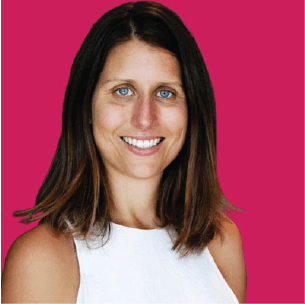By Dr Nina Hood
The world of work is changing. Organisations are questioning how they can redesign jobs to maximise the expertise and specialist knowledge of individual employees, to operate more efficiently and effectively, to take advantage of automation and increasing digitisation, and to meet the changing demands and needs of (particularly younger) workers. However, education, especially schools, has been relatively slow to explore new possibilities in talent management and structuring employment.
Last week we released a story about the Roaming Teachers scheme, developed by the Young Enterprise Trust, which sees experienced business studies teachers working with teachers across 30 schools to improve their business studies programmes. Lucy Wymer, who was the first roaming teacher described the opportunity the initiative provides for keeping good teachers in education and enabling them to share their knowledge and expertise to support teachers and students across multiple schools. This initiative provides one example of how we can create new roles and opportunities, which add substantial value, both to the teaching profession and our school system more broadly.
Currently, the vast majority of teachers are expected to be generalists. That is, all teachers regardless of whether it is their first year in the classroom or their twentieth, or where their individual strengths lie, largely have the same responsibilities, and perform the same tasks and roles. Furthermore, in New Zealand, career advancement for teachers primarily involves taking on an administrative role – as a syndicate or department leader, as a dean, or as a deputy principal or principal. There currently are limited opportunities for our most talented educators, who wish to remain in the classroom, to be recognised for their deep knowledge and expertise, and the contribution that they make to their students or to the development of other teachers.
There is potential to move away from a purely generalist model in teaching and instead to identify and recognise the strengths of individual educators and shape their jobs so that they can spend more time focusing on tasks that rely on their particular expertise. For example, some teachers are especially talented at designing powerful curriculum materials, or working with students who are achieving at levels substantially below their peers. Within such a model there is further opportunity for schools to identify expert educators and to relieve them of particular jobs and responsibilities so that they can spend more time on the tasks that require their specialised skills, including supporting the up-skilling and professional learning of other teachers.
Alongside a rethinking of the structure of teachers’ roles and work there is an opportunity to explore whether there are particular services, tasks or roles that currently are undertaken by each school individually but instead could be distributed across multiple schools. In a devolved school system like New Zealand, where each school must develop universal capabilities, this has particular merit. Automation also offers new possibilities for rethinking professional and operational structures in schools. The McKinsey Global Institute estimates that up to 45 percent of the activities employees perform can be automated by adapting currently available technologies. Digital technologies could be better used to undertake some of the organisational and administrative tasks in schools, enabling teachers to focus on the parts of their job that rely on their tacit experiential knowledge and the development of interpersonal relationships, aspects that cannot, or at least should not, be replaced by automation.
Changing expectations about employment from young people entering teaching will challenge the current rigid model. There is growing demand for greater flexibility in the structure of jobs as well as in career progression opportunities. People entering the job market today expect to change jobs multiple times over the course of their careers. Thought must be given to how schools and the teaching profession more generally can mentor new teachers into their roles while also providing opportunities for teachers to embrace greater diversity in their work and to seek new responsibilities and positions both inside and outside of schools.
We know that there are people, schools and organisations that are innovating in education, and challenging traditional practices, structures and paradigms. Our task now is to identify where these innovations are occurring and to learn from and with them as they challenge conventional ways of thinking and behaving.


